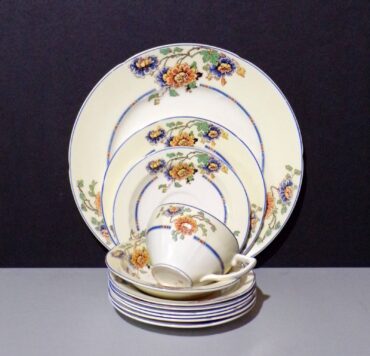 Availability, trend, need and definition will determine the future of “thrifting,” which is primarily looking for used items. Today, the activity is enormous in many directions, but tomorrow may be a different story.
Availability, trend, need and definition will determine the future of “thrifting,” which is primarily looking for used items. Today, the activity is enormous in many directions, but tomorrow may be a different story.
My expertise began in the ’70s, when I was teaching drawing and design at Olympic College, was an active journeyman plumber and managed a large rummage sale building in downtown Bremerton — that certainly gives one an open-eye on society.
Back then, a war ended, the Beetles broke up and Pyrex rocked the market with its gold-and-green dishware and bakeware. Thrifting was primarily for need. Some who could afford buying “new” hesitated buying used items, in that it took from those less fortunate. That attitude started changing in the ’80s, as availability and content abounded with the increasing number of antique shops, thrift stores and front lawn rummage sales.
With the ’90s, China said “Hello,” and diversity and quantity began a humungous rise. You wanted it, China made it. You wanted more — you bought and discarded the old. There was no longer the “for-those-who-need” factor because quantity and availability were there for all. And we were seeing the online sell-it-or-buy-it trend.
The new century entered and decorating began leaning toward minimalism. That meant more used, unwanted product on the market.
This did not diminish thrifting, but the definition changed. Previous “antique-thinking” was not “practical-use-thinking.” Grandma’s dish set was not wanted, but a garden tool, ankle bracelet or anything midcentury-modern was grabbed up. Online thrifting took hold and is still major today. Those TV ads selling cute, quirky clothes and household items — they don’t mention they’re selling rummage, used stuff.
Tomorrow’s thrifting? A shaky economy historically means “holding on” to household items. You might not like hearing what I’m about to say, but the next generation wants grandma’s dishes — and those dishes are nowhere to be found.












